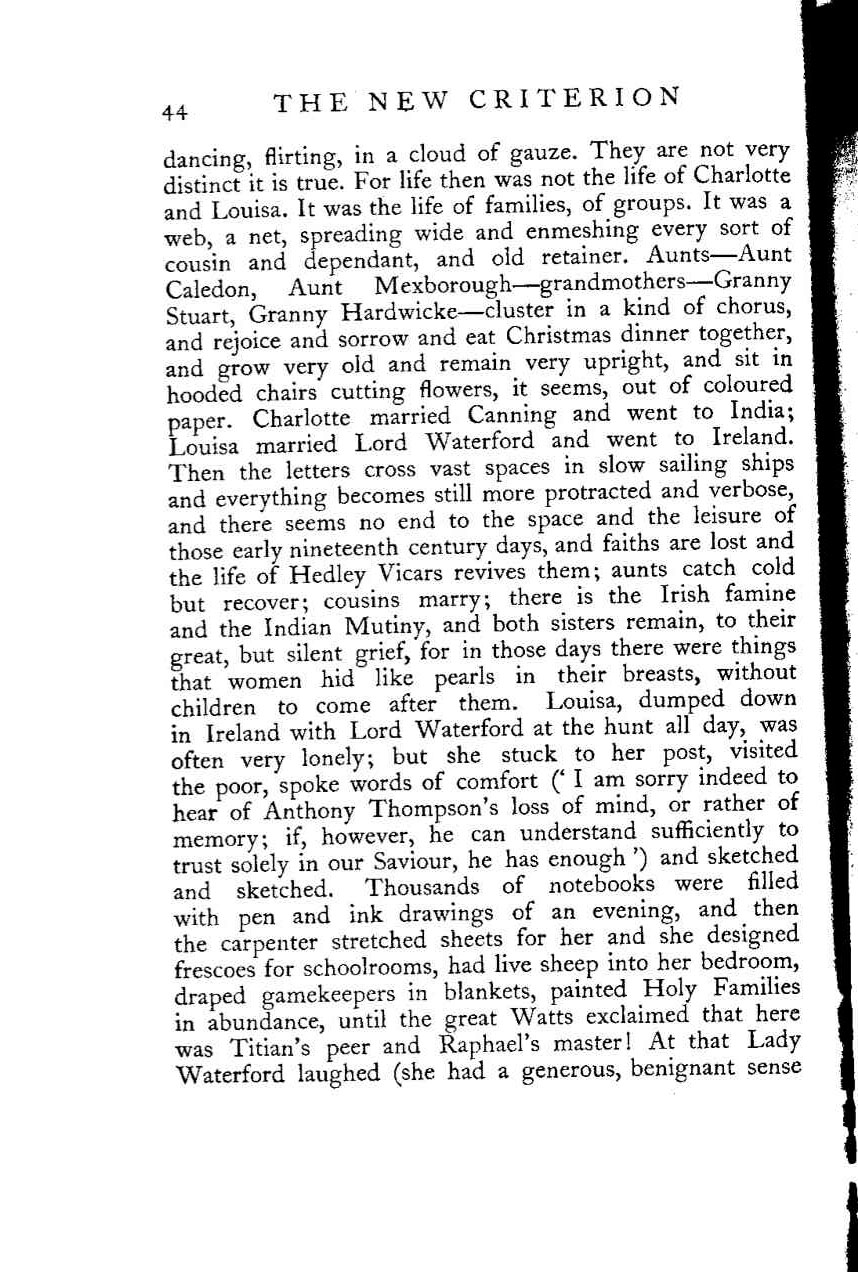
dancing, flirting, in a cloud of gauze. They are not very
distinct it is true. For life then was not the life of Charlotte
and Louisa. It was the life of families, of groups. It was a
web, a net, spreading wide and enmeshing every sort of
cousin and dependant, and old retainer. AuntsŌĆöAunt
Caledon, Aunt MexboroughŌĆögrandmothersŌĆöGranny
Stuart, Granny HardwickeŌĆöcluster in a kind of chorus,
and rejoice and sorrow and eat Christmas dinner together,
and grow very old and remain very upright, and sit in
hooded chairs cutting flowers, it seems, out of coloured
paper. Charlotte married Canning and went to India;
Louisa married Lord Waterford and went to Ireland.
Then the letters begin to cross vast spaces in slow sailing ships
and everything becomes still more protracted and verbose,
and there seems no end to the space and the leisure of
those early nineteenth century days, and faiths are lost and
the life of Hedley Vicars revives them; aunts catch cold
but recover; cousins marry; there is the Irish famine
and the Indian Mutiny, and both sisters remain, to their
great, but silent grief, for in those days there were things
that women hid like pearls in their breasts, without
children to come after them. Louisa, dumped down
in Ireland with Lord Waterford at the hunt all day, was
often very lonely; but she stuck to her post, visited
the poor, spoke words of comfort (ŌĆśI am sorry indeed to
hear of Anthony Thompson's loss of mind, or rather of
memory; if, however, he can understand sufficiently to
trust solely in our Saviour, he has enoughŌĆÖ) and sketched
and sketched. Thousands of notebooks were filled
with pen and ink drawings of an evening, and then
the carpenter stretched sheets for her and she designed
frescoes for schoolrooms, had live sheep into her bedroom,
draped gamekeepers in blankets, painted Holy Families
in abundance, until the great Watts exclaimed that here
was Titian's peer and Raphael's master! At that Lady
Waterford laughed (she had a generous, benignant sense






